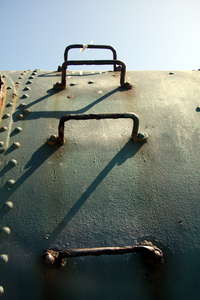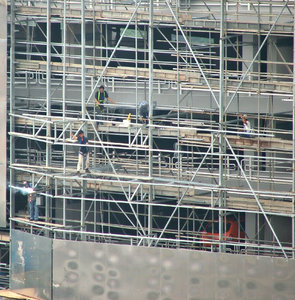Our Massachusetts workers’ compensation lawyers have been reviewing the summary of 2010 workplace injuries and illnesses recently released by the U.S. Department of Labor’s Bureau of Labor Statistics (BLS).
State-specific data has yet to be released by the department, but we have some concerns about the overall statistics presented in the report. Almost 3.1 million workers were injured or became ill while working in private industry jobs in 2010, which equates to 3.5 incidents per 100 full-time or equivalent employees nationwide. This indicated very little change from 2009.

Employers have a responsibility to provide a safe work environment for their employees and keep potential hazards out of the workplace. Yet we frequently post about trench and fall accidents at Boston construction sites on our Massachusetts Workers’ Compensation Lawyers Blog. These severe and sometimes fatal accidents occur because employers don’t take the necessary precautions that are required by law or offer protective equipment to keep workers safe while they are working.
In reviewing the 2010 summary, we found the following to be true:
- Almost 95 percent of the private industry sector cases were injuries, compared to roughly 5 percent reported illness cases.
- More than 1.5 million reported illness or injury cases in the private industry sector were severe enough to require missed time from work, restricted duties or a job transfer. These cases are also known as DART cases.
- DART cases in 2010 occurred at a rate of 1.8 cases per 100 full-time employees which was unchanged from the previous year.
- Incidence rates for less severe cases (non-DART) occurred at a rate of 1.7 cases per 100 full-time workers which was a slight improvement from 2009 when the rate was 1.8.
- Mid-size private industry work sites reported the most cases of injury and illnesses compared to the small establishments reporting the fewest number of cases. Mid-size establishments typically employ between 50 and 249 workers compared to small establishments that only employ 10 workers or less.
- 2.2 million of the injuries recorded at work were in service-providing industries which equates to almost 76 percent of injuries in the private sector. The next highest recordable cases were in the goods-producing industries which was approximately 24 percent of injury cases.
- Goods-producing industries also accounted for over 36 percent of illness cases at work in 2010 resulting in an incidence rate of 31.8 per 10,000 full-time employees. This was an increase from the 29.1 case rate reported in 2009.
- Manufacturing industry sector was the highest subsector of goods-producing industries to report illness cases in 2010 recording the highest incidence rate among all industry sectors at 41.9 cases per 10,000 full-time employees.
- State and local government workers reported roughly 820,300 illness and injury cases in 2010, which equated to 5.7 cases per 100 full-time workers.
- Local government workers accounted for 4 out of 5 illnesses and injuries in the public sector reported in 2010. The rate of cases was significantly higher in 2010 for local government workers than state government workers at 6.1 cases per 100 full time employees to 4.6 cases respectively.
In a recent statement, Secretary of Labor Hilda L. Solis comments that better records need to be kept so that employers know what kind of illnesses and injuries are happening at their establishment. Many employers have a poor record-keeping system or practice in place which prevents workers from reporting when an incident occurs. Knowing what the problem is and how often it occurs is the first step in resolving issues and keeping workers safe in the future.
“As our economy continues to rebound and grow, we must ensure that safety and health are a part of that growth,” says Secretary of Labor Hilda L. Solis. “Let’s all remember that no job is a good job unless it is also a safe job.”
The Occupational Safety and Health Administration recently released updated materials and new documents for worker safety and health in several industries including construction. Employers are encouraged to provide these documents to employees and refer to them regularly in order to ensure that workers remain safe while performing job duties.
Continue reading
 Massachusetts Workers Compensation Lawyers Blog
Massachusetts Workers Compensation Lawyers Blog








